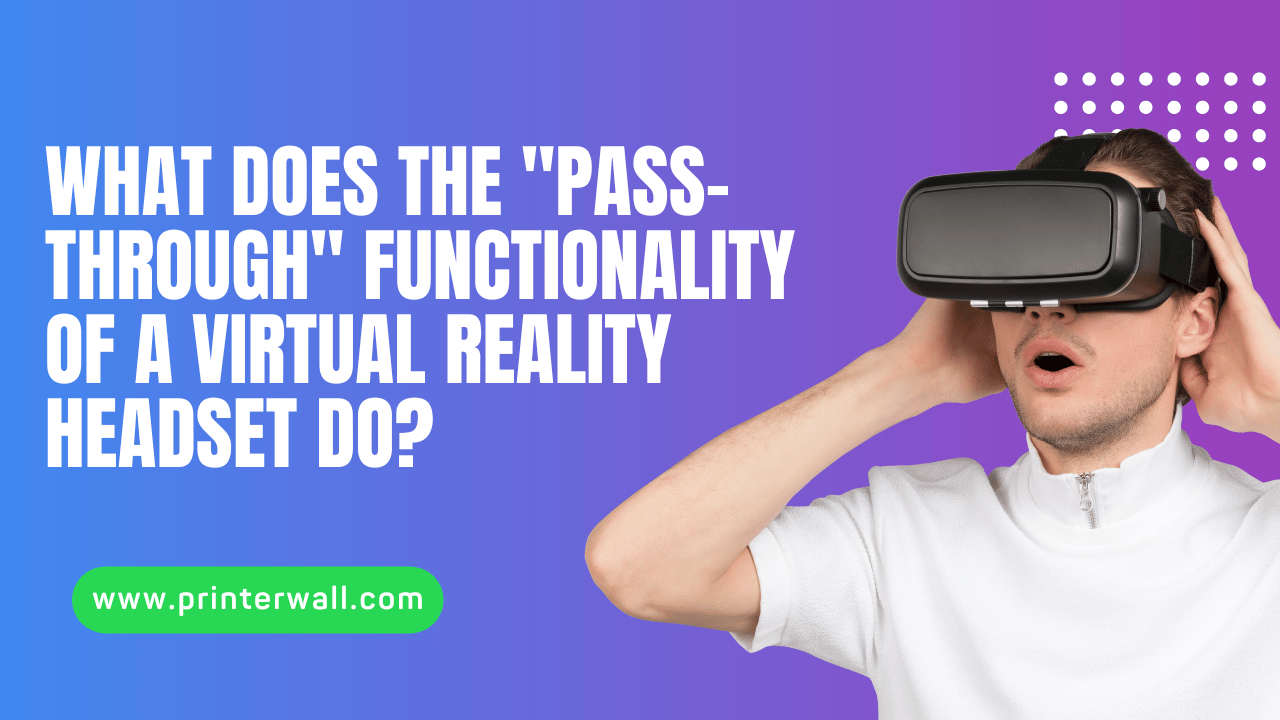Virtual Reality (VR) headsets have undeniably revolutionized our interaction with the digital world, creating immersive experiences that seemed unfathomable only a few years ago. But have you ever wondered how you could still maintain awareness of your real-world surroundings while diving deep into the virtual realm? This question brings us to the thrilling technology of pass-through functionality. Let’s explore “What Does the “Pass-Through” Functionality of a Virtual Reality Headset do?”. Keep reading!
What Is Pass-through Functionality in VR Headsets?
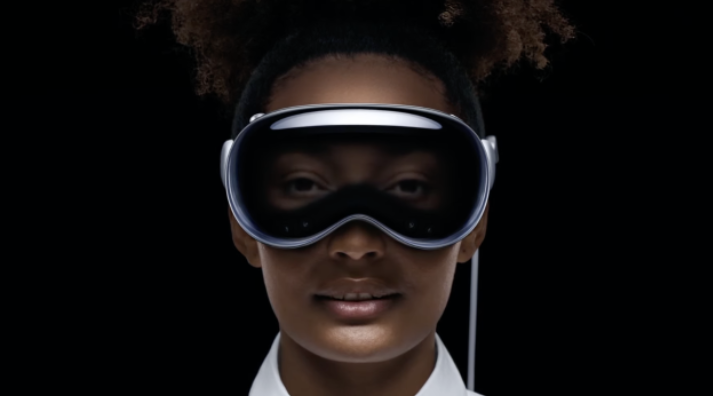
Imagine strapping on a VR headset, prepared to play a game or explore a new environment, but still able to glimpse your cup of coffee resting on the table or notice your pet wandering across the room. This blend of real and virtual, enabled by the pass-through functionality, adds a new layer of interaction to your VR experience.
In essence, pass-through is a feature that uses built-in external cameras on your VR headset to feed real-world images into your digital view. In simple terms, it acts as a window to the outside world, providing a much-needed balance between virtual exploration and physical awareness.
How Does the Pass-through Feature Work in Virtual Reality Headsets?
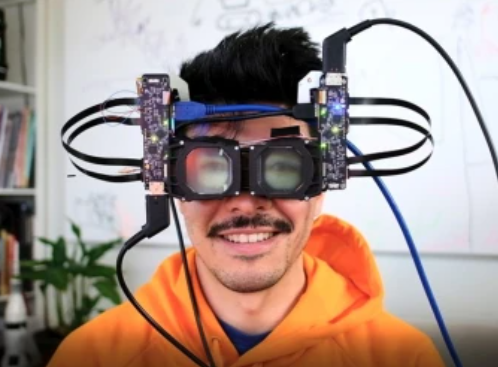
Modern VR headsets come equipped with outward-facing cameras that capture real-time video feed of the surrounding environment. The pass-through feature processes this feed and seamlessly integrates it into your VR display. The result? You get a live, albeit digitalized, view of the physical world around you while remaining immersed in your virtual experience.
Augmented Reality (AR) Passthrough & Mixed Reality (MR) Passthrough: A New Wave of Interaction
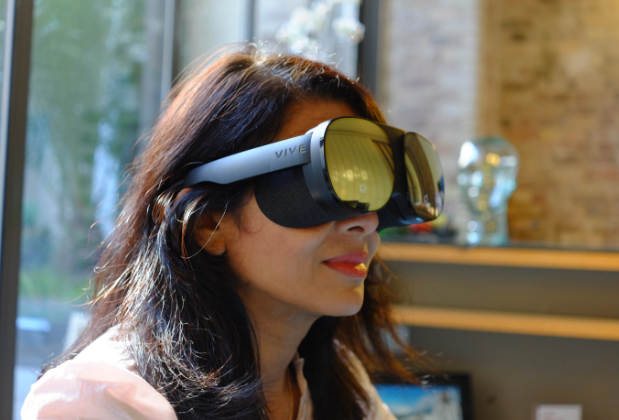
While pass-through functionality has been a major breakthrough in VR technology, it has also paved the way for augmented reality (AR) and mixed reality (MR) experiences. AR passthrough, for instance, overlays digital objects onto the real-world view. Imagine looking at your living room through your VR headset and seeing a dinosaur strolling around! On the other hand, MR passthrough blurs the lines further, allowing users to interact with both real and virtual objects in the same setting.
Benefits of Using Pass-through in VR Headsets
The pass-through feature in VR headsets is not just about transforming your gaming or viewing experiences; it’s about providing a safer, more intuitive, and highly versatile VR journey. By combining the real and virtual worlds, you can avoid accidents or collisions, making the VR experience safer, especially in compact spaces. Moreover, the passthrough mode fosters greater immersion, reducing the disorientation some users feel in VR.
Pass-through Technology in Virtual Reality: Limitations & Future Potential
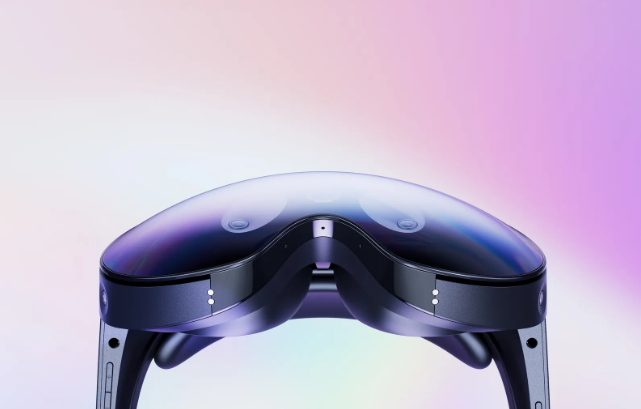
While the pass-through functionality has dramatically enhanced the VR experience, it does have some limitations. The quality of the pass-through video feed can vary depending on the VR headset model and the capabilities of its cameras. Also, the feature might present a slight delay, potentially affecting the sense of immersion. However, the technology is continually improving, and we can expect to see more accurate and efficient passthrough systems in the future.
Privacy Concerns Associated With Pass-through in VR Headsets
As with any technology involving cameras and data capturing, the pass-through feature raises some privacy concerns. However, VR manufacturers are aware of this and have implemented measures to ensure user privacy. For instance, most of the time, the video feed is processed directly on the headset, ensuring data doesn’t leave your device.
To wrap it up, the pass-through functionality in VR headsets marks a significant leap forward in VR technology, offering a delightful blend of reality and virtuality. It revolutionizes the way we interact with digital worlds, paving the way for safer, more intuitive, and astonishingly immersive VR experiences. Embrace the evolution, and plunge into the exhilarating world of virtual reality with a new sense of awareness and interaction.
Enhancing Spatial Awareness with VR Headset Passthrough
A standout feature of the passthrough technology is its potential to improve spatial awareness during a VR session. VR users often report feeling disoriented or “boxed in” due to the lack of context about their physical surroundings. By allowing users to perceive and interact with their real-world environment, passthrough technology can help minimize these discomforting sensations, ultimately making VR experiences more enjoyable and intuitive.
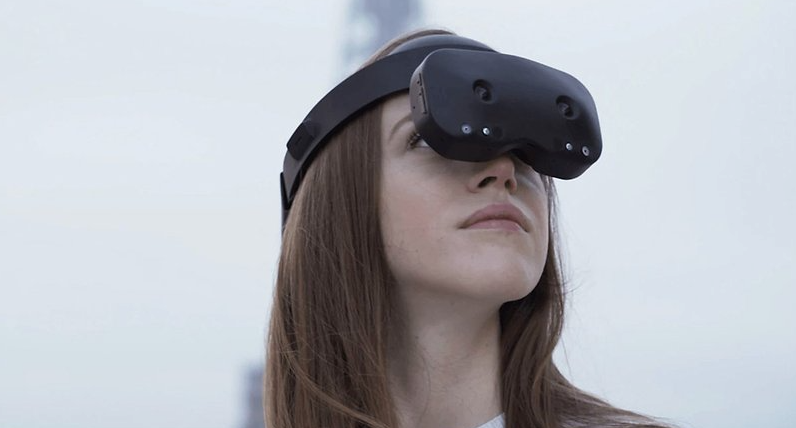
Passthrough Video Feed Quality in VR
The quality of the passthrough video feed is a vital aspect of the VR experience. The resolution, frame rate, and latency of the feed can significantly impact the user’s immersion and comfort. Some high-end VR headsets offer high-definition passthrough feeds with minimal latency, providing a clear and responsive real-world view. However, as the technology matures, we can expect to see improvements in passthrough video feed quality across a broader range of VR devices.
The Role of Pass-through Cameras in VR Safety
One of the most compelling applications of the passthrough functionality is enhancing the safety of VR users. During a fully immersive VR session, it’s easy to lose track of your physical surroundings, leading to possible collisions or falls. The passthrough feature, by offering a glimpse of the real world, allows users to avoid obstacles, helping prevent accidents. This functionality is especially beneficial when playing VR games that require a lot of movement.
Real-world Applications of Pass-through in Virtual Reality
Passthrough technology opens up numerous practical applications in various fields. For instance, in education, VR headsets with passthrough can provide immersive learning experiences that merge real-world elements with virtual educational content. In industries such as architecture and interior design, professionals can use passthrough functionality to visualize virtual designs in real-world settings.
Combining Real and Virtual Worlds: The Future of VR
As VR technology evolves, the integration of real and virtual worlds is expected to become even more seamless. Future VR headsets could use advanced passthrough technology to provide photorealistic views of the physical environment, effectively eradicating the boundaries between the real and virtual.
With developments in machine learning and computer vision, we might see VR systems that can intelligently interpret and interact with the real-world elements captured by their passthrough cameras. This could enable sophisticated AR and MR experiences where users can manipulate virtual objects based on real-world inputs.
FAQs
Can I interact with virtual objects while using the pass-through feature?
Yes, certain VR systems allow interaction with virtual objects while using the pass-through feature, especially in AR and MR experiences.
Are there any specific setup requirements for using the pass-through functionality?
The setup requirements for pass-through vary depending on the VR headset model. Some headsets offer this functionality by default, while others might require software updates or additional hardware.
Can I switch between pass-through mode and full virtual reality immersion easily?
Absolutely. Most VR headsets with pass-through functionality allow you to switch easily between modes, enabling a fluid VR experience.
How does pass-through technology impact the sense of presence in virtual reality?
By providing a real-time view of the physical environment, pass-through technology can enhance the sense of presence in VR. It allows users to stay grounded in their physical surroundings, making their interactions with the virtual environment feel more natural and realistic.
Can pass-through cameras help improve the resolution of VR experiences?
While the primary role of pass-through cameras is to provide a view of the real world, they can also contribute to improving the overall VR experience. Advanced VR systems can use data from these cameras to enhance tracking accuracy and stability, which can result in smoother, higher-resolution VR experiences.
Also Read: Creating a Wonderland for Kids with Playroom Mats
Conclusion
In summary, the passthrough functionality in VR headsets is set to revolutionize the way we experience the virtual world. It mitigates some of the inherent limitations of VR, provides enhanced safety features, and creates new possibilities for AR and MR applications. We hope this guide about “What Does the “Pass-Through” Functionality of a Virtual Reality Headset do?” will prove much beneficial for all our readers. As we move forward, this exciting technology is expected to play a pivotal role in shaping the future of virtual reality, making it safer, more immersive, and extraordinarily engaging.

Aretha Davis, the wordsmith extraordinaire, weaves enchanting tales with her pen and keyboard. A renowned blogger and writer, her captivating prose transports readers to realms unknown. Join her literary journey and be swept away by the magic of her words.
